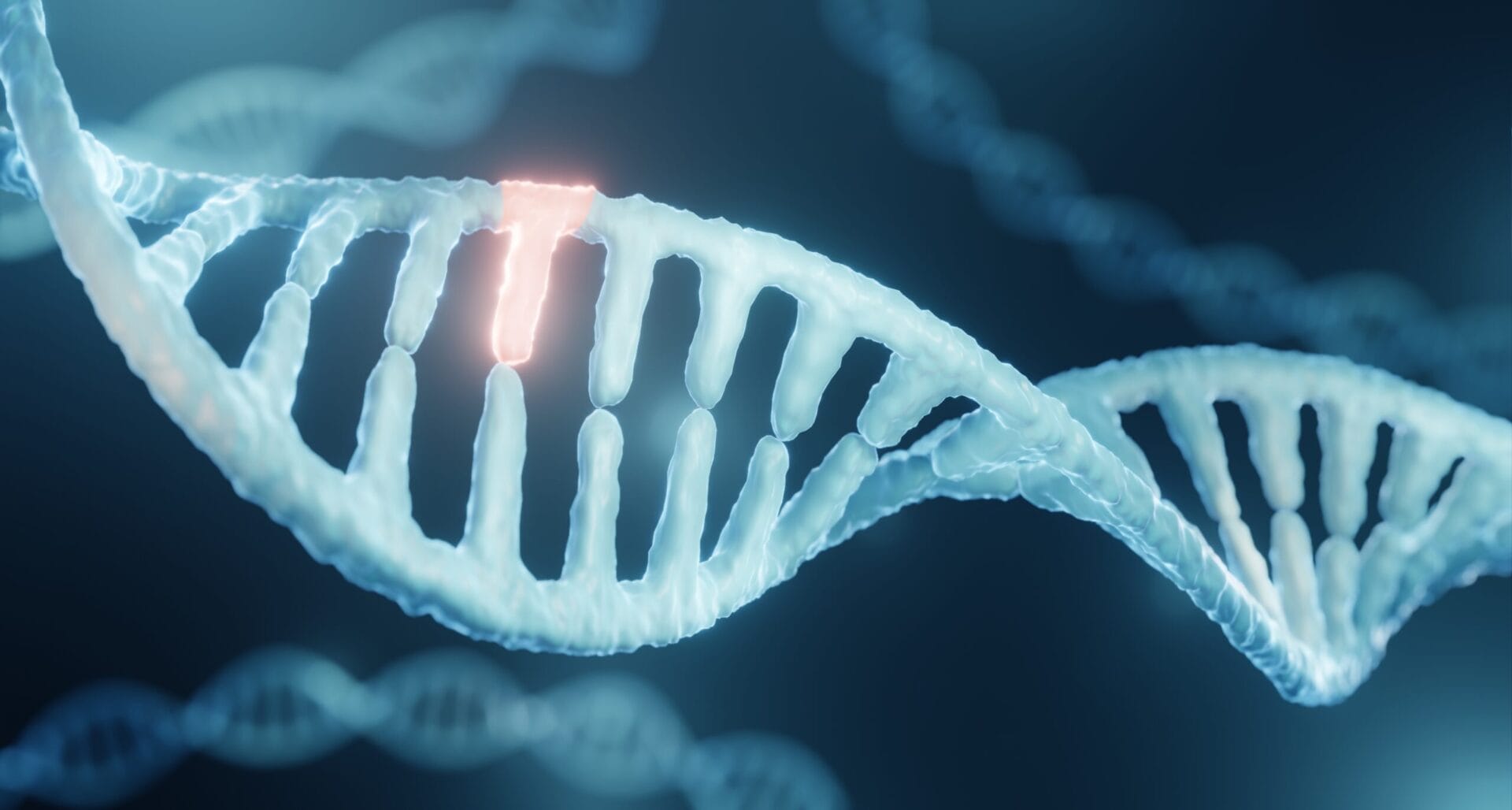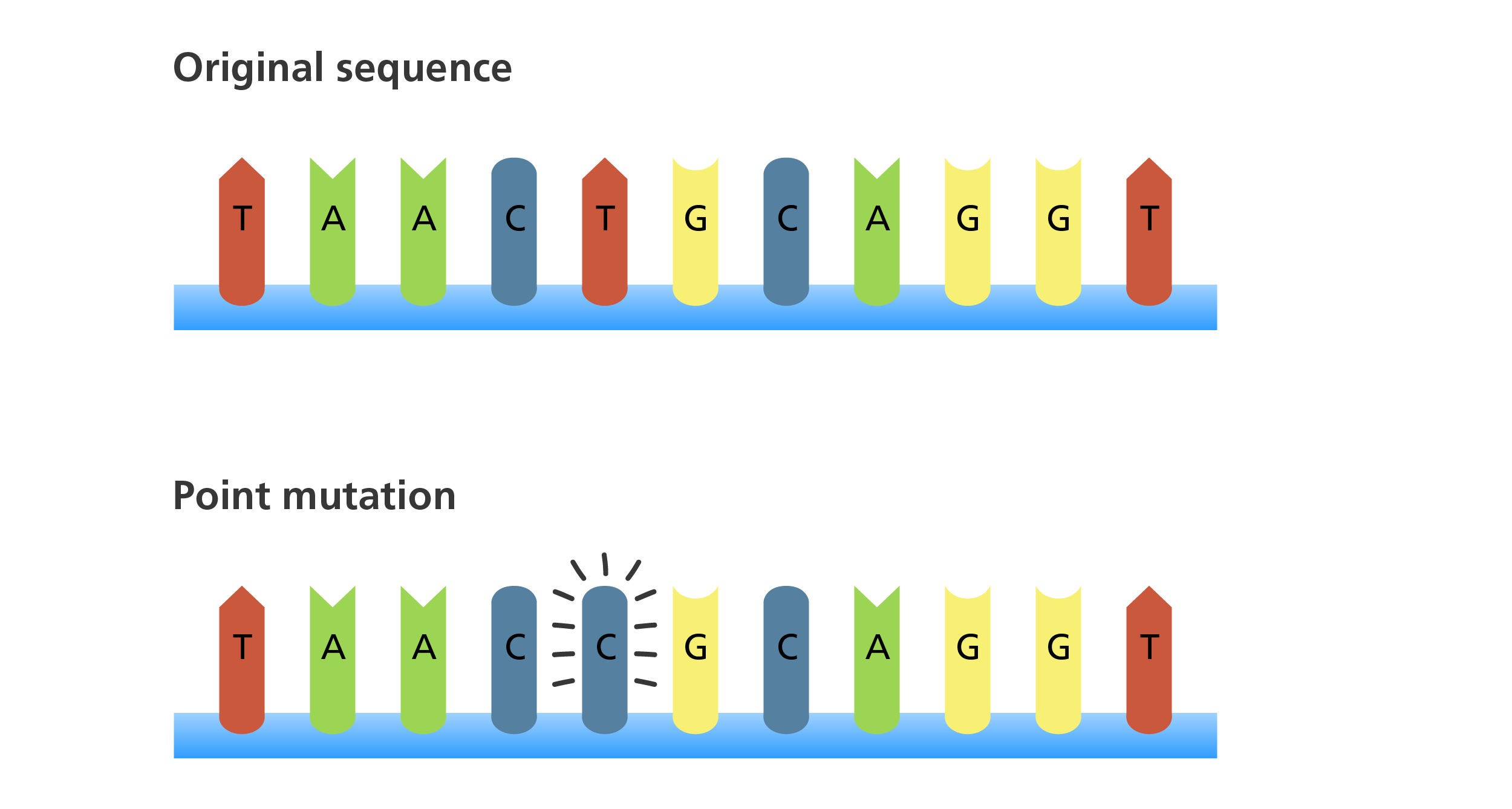What is a mutation?

A mutation is a change that occurs in our DNA sequence. This can be caused by normal processes inside the cell or by environmental factors, such as UV light.
- DNA is made up of four building blocks, or bases – known as A, T, C and G. The sequence of bases form instructions for our cells to follow, including how to make all of the body’s proteins.
- The DNA of all living things can get damaged, resulting in changes to its sequence. These changes are called mutations.
- Some mutations don’t have any effect. Others can cause changes in the proteins that are produced. The impact this has on the protein and the cell can be positive, negative or neutral.
What causes mutations?
- Generally, our cells are good at spotting and repairing DNA damage. However, not all damage is found or repaired, and this can lead to a fixed mutation.
- Sometimes, a mutation can be introduced during DNA replication, if the cell makes a mistake when copying the 3.2 billion bases of the DNA sequence. The natural processes that happen inside our cells can also damage the DNA, leading to mutations if they aren’t corrected.
- Mutations can also occur as the result of exposure to environmental factors such as smoking, UV sunlight and radiation, which can cause damage to the DNA.
What impact can mutations have?
- There are different types of mutations defined by how the DNA has changed from the original code.
- Some mutations have no effect. These are sometimes called ‘silent’ mutations.
- Mutations can be inherited and contribute to genetic variation, and eventually evolution, within a species. This is often the case if a mutation has a positive effect.
- For example, if mutated, the gene that instructs the cell how to make the haemoglobin protein can protect people against malaria. This mutation is common in places where malaria is common, such as countries in sub-Saharan Africa. It’s a delicate balance, however – having two copies of this mutation can cause a disorder called sickle cell anaemia.
- Some mutations can cause diseases, such as cancer. For example, a mutation in the BRAF gene, which usually helps to control the growth of a cell, can lead to the development of cancer. Sometimes, people inherit certain mutations in cancer-causing genes from their parents. This can increase their risk of developing cancer.

An illustration to show an example of a DNA mutation.
Image credit: Laura Olivares Boldú / Wellcome Connecting Science
Inheriting mutations
- We inherit a copy of each of our genes from each parent. A mutation in one of these genes can be passed on from parent to child.
- Even though mutations are common, inherited diseases are relatively rare. This is because inherited diseases are often recessive, which means that a person must inherit a mutated copy of the gene from both parents to develop the disease.
- Inheritance is important for evolution. For example, if a mutation gives an organism an advantageous trait, then the species may gradually evolve over many generations.